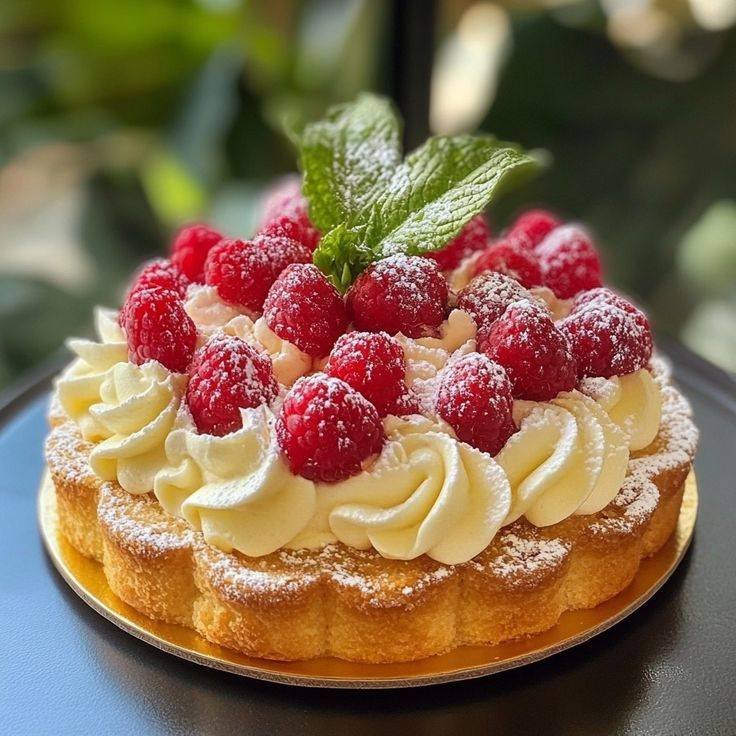ADVERTISEMENT
Perfect Shortcrust Pastry: The Essential Recipe for Every Baker
Shortcrust pastry is one of the most fundamental elements in baking, forming the base of everything from savory pies to sweet tarts. Its delicate, crisp texture and rich, buttery flavor make it a favorite for many recipes. Whether you’re a seasoned baker or a beginner, knowing how to make perfect shortcrust pastry is an essential skill. This simple yet versatile pastry can elevate your baked goods to a whole new level, providing the ideal foundation for your fillings.
In this article, we’ll explore how to make the perfect shortcrust pastry every time, with tips for success, common mistakes to avoid, and how to customize the pastry for your specific needs.
What is Shortcrust Pastry?
Shortcrust pastry is a dough made primarily from flour, fat, and water. It’s called “short” because the fat (usually butter) interferes with the gluten formation in the flour, resulting in a tender, crumbly texture. This type of pastry is perfect for both sweet and savory dishes, such as fruit tarts, quiches, and pies. The ratio of ingredients and the technique used during preparation play a crucial role in achieving that perfect balance between crispness and flakiness.
Why You’ll Love Perfect Shortcrust Pastry:
- Buttery and Flaky: Shortcrust pastry is known for its delicious buttery flavor and crispy texture. The secret lies in the perfect balance of butter and flour.
- Versatile: Whether you’re making a savory quiche or a sweet fruit pie, shortcrust pastry works beautifully for any type of filling.
- Simple Ingredients: It requires only a few basic ingredients, making it an accessible recipe even for beginners.
- Customizable: You can make it your own by adding a bit of sugar for sweet pies or incorporating herbs and spices for savory dishes.
Ingredients for Perfect Shortcrust Pastry:
- 1 1/4 cups (160g) all-purpose flour (plus extra for rolling)
- 1/2 cup (115g) unsalted butter, cold and cubed
- 1/4 teaspoon salt
- 1 tablespoon sugar (optional, for sweet pastries)
- 3-4 tablespoons ice-cold water
Instructions for Making Shortcrust Pastry:
1. Prepare the Ingredients:
Start by preparing all your ingredients. Ensure the butter is cold, as this is essential for a flaky pastry. You can even chill your flour and bowl in the fridge for 10 minutes before starting, as the colder your ingredients, the better the result.
2. Mix the Dry Ingredients:
In a large mixing bowl, combine the flour, salt, and sugar (if you’re making sweet pastry). Mix everything together until evenly combined.
3. Add the Cold Butter:
Add the cubed cold butter to the flour mixture. Using your fingers, a pastry cutter, or two knives, work the butter into the flour until it resembles coarse breadcrumbs with some pea-sized lumps of butter still visible. The key here is not to overwork the dough. You want small pockets of butter that will melt during baking and create flakiness.
4. Add the Water:
Slowly drizzle in the ice-cold water, 1 tablespoon at a time, and mix with a fork. Continue adding the water until the dough just begins to come together. You may not need all the water, so be careful not to add too much.
5. Bring the Dough Together:
Once the dough starts to come together, turn it out onto a lightly floured surface and gently knead it a few times. Be careful not to overwork the dough, as this can cause it to become tough. Shape it into a ball, then flatten it into a disk about 1 inch thick.
6. Chill the Dough:
Wrap the dough disk in plastic wrap and chill it in the fridge for at least 30 minutes. Chilling the dough is crucial because it firms up the butter, making it easier to roll out and ensuring a flaky texture.
7. Roll Out the Dough:
Once the dough has chilled, remove it from the fridge. Place it on a lightly floured surface and roll it out with a rolling pin. Roll the dough from the center outward, rotating it occasionally to keep it even. Aim for a thickness of about 1/8 inch (3mm). If the dough gets too soft or sticky, refrigerate it again for a few minutes before continuing.
8. Line Your Pan:
Once the dough is rolled out, carefully transfer it to your pie or tart pan. You can use your rolling pin to lift it by rolling the dough onto the pin and then unrolling it over the pan. Press the dough gently into the pan, making sure to line the edges and corners. Trim any excess dough from the edges, leaving about 1 inch of overhang.
9. Blind Bake (Optional):
For pies or tarts that will be filled with a wet filling, like fruit pies or quiches, it’s important to “blind bake” the pastry first. To do this:
- Preheat the oven to 375°F (190°C).
